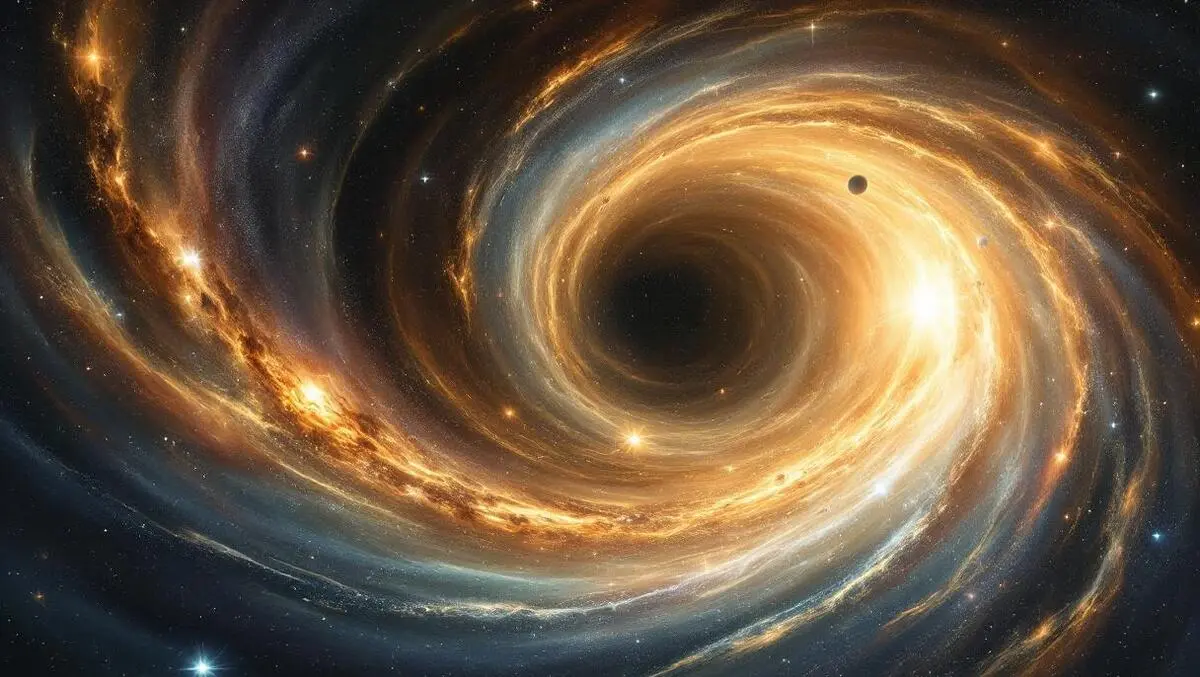
Sussex team to unveil digital twin of Universe at Goodwood
An international team from the University of Sussex is set to create a digital twin of the Universe at the Goodwood Festival of Speed, with the simulation on public display from 10 to 13 July.
The simulation will be launched as part of the FOS Future Lab exhibition and will condense 14 billion years of the Universe's evolution into four days. The exhibit uses the University of Sussex's supercomputer, drawing from cosmology and physics models to present the formation and development of the cosmic web, galaxies, stars, and black holes. Data from the Euclid and James Webb space telescopes will be used to ensure the simulation's scientific accuracy.
The project is led by Professor Stephen Wilkins, Deputy Head of Physics and Astronomy, and Dr Will Roper, Research Fellow in Extragalactic Astrophysics, both at the University of Sussex. Professor Wilkins also works with the European Space Agency's Euclid Consortium, directing efforts to map the dark universe, and conducts analysis using the James Webb Space Telescope. Dr Roper operates the digital twin that will be exhibited and is a developer behind the SWIFT simulation code used in the FLAMINGO project.
Professor Wilkins said, "The simulation combines physical theories such as gravity, hydrodynamics, dark matter dynamics, and radiative processes, to recreate the complex interplay of matter and energy that drives cosmic evolution. As the simulation progresses, it will generate visualisations of various cosmic components, such as the distribution of otherwise invisible dark matter, gas, stars, and black holes. Visitors can interact with these visualisations, by exploring how the structures have evolved over time."
Dr Roper added, "At Future Lab, we'll explain the laws that govern our universe by giving the public a chance to see how the universe evolves, how a galaxy is born and how our Milky Way may have evolved to support the human race. We can inspire interest in STEM subjects and highlight what's needed to progress our understanding."
Discussing the possibility of life beyond Earth, Professor Wilkins said, "Over the last 20 years we've discovered thousands of planets orbiting other stars, suggesting suitable environments exist. We're now looking at some of those planets seeing whether the building blocks of life are present or whether there's evidence in the form of unusual chemistry."
Future Lab exhibition
Future Lab, curated by Lucy Johnston, will feature work in fields such as health, space, deep sea exploration, robotics and artificial intelligence. Future Lab is expected to host over 1,000 students and more than 90,000 total visitors over the weekend, offering them an opportunity to engage with interactive exhibits focused on STEM topics.
Other exhibitors at Future Lab will include The National Robotarium, featuring the humanoid robot Ameca; Space Forge, which recently received GBP £22 million from the NATO Innovation Fund for work on space-based semiconductors; an ESA consortium working on a digital twin of the Universe; Seabed 2030, focussing on ocean floor mapping; the Endurance 2022 mission, which will present a 3D printed model of Shackleton's Endurance vessel; and Certo Aerospace, developing automated helicopter drones with support from the US Department of Defense.
The Festival of Speed promotes STEM education and provides interactive opportunities for students to learn about scientific and technological developments. The Future Lab's digital twin display will unfold over the course of the festival, demonstrating cosmic events and encouraging public engagement with science.


